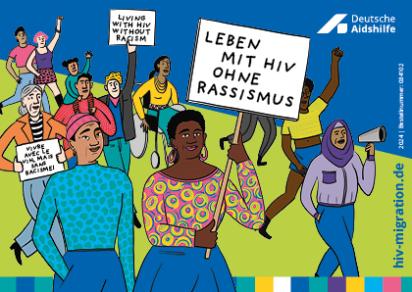HIV and migration

People who have immigrated to Germany are not necessarily less healthy than natives; in fact, the opposite can be the case. Under certain circumstances, however, migrants have an increased risk of falling ill - and yet often do not have the same access to the healthcare system, to insightful information, education and care as people who were born here.
This also applies to HIV/AIDS. However, we need to take a closer look: there are various migrant groups in Germany whose situation differs significantly from one another and who are affected by HIV/AIDS to varying degrees. The risk of becoming infected with HIV also varies.
Why HIV prevention for and with migrants?
Health is a human right - regardless of whether people live in the country they were born in.
All people living in Germany should have the same access to information, prevention, advice and care, regardless of their cultural background. This is provided for in the action plan for implementing the German government's HIV/AIDS control strategy. In reality, however, migrants are often less well reached by HIV prevention messages and services than the rest of the population for a variety of reasons. There is a need for action.
The statistics show that in Germany, around one in three new HIV diagnoses involves a person who has immigrated. As the infections are not only brought from the countries of origin, but also occur here in Germany, HIV prevention services must be tailored more specifically to the needs of migrants. (Source: RKI)
So how can HIV prevention be adapted to the needs of migrants? Our suggestion: by involving them and jointly determining what their needs are. In this way, HIV prevention measures and services can be developed that actually meet the respective needs.
About this website
This website provides information about the migration work of Deutsche AIDS-Hilfe e.V. (DAH) - one of the main players in HIV prevention in Germany. It is intended to help practitioners and multipliers with and without a migration background to organize HIV prevention for and with migrants in a needs-based and sustainable way. It explains terms, describes methods, presents new scientific findings, reports on practical experience and presents both new training courses and media for migration work.
